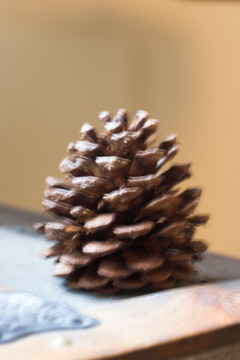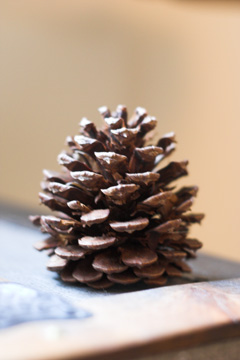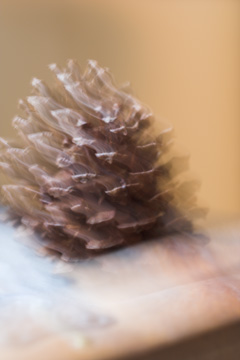Shutter speed is pretty much exactly what it sounds like, the speed of your shutter. It refers to how long the shutter stays open, exposing the film/sensor to light through the lens. The shutter speed is denoted in fractions of a second. So a shutter speed of 125 would be 1/125th of a second and a shutter speed of 250 would be 1/250th of a second. Stay with me here... that means that 250 is faster than 125 and therefore 250 lets in less light than 125 because the shutter is open a shorter length of time. Am I making sense??
Try putting your camera on manual mode (M) and set your aperture to whatever you want. then leave the aperture alone and don't change it. Try taking several pictures at various shutter speeds and see how it changes. An image taken at 1/60th of a second should be brighter than the same one taken at 1/125th of a second. Likewise, one taken at 1/250th of a second should be darker than the one at 1/125th. (Keep in mind this exercise will only work in Manual mode... in the other modes your camera will be making adjustments to keep the exposure from changing)
Like aperture, changing your shutter speed not only affects your exposure, it can also change the look of your image; but this time, instead of bokeh, its blur that is influenced by changing the settings.
Blur seems pretty self-explanatory, right? Its blurry. That infuriating thing that happens when you're trying to take pictures with your point and shoot and the shutter takes forever and its kind of dark inside the house and instead of capturing little Jimmy as he blows out his birthday candles, you get a jumbled mess of smeary looking colors in which nothing is distinguishable. (Longest run-on, and possibly incomplete, sentence ever right there...) Right, that's one kind of blur, but its not the only kind.
#1 Camera shake... this is the bad blur. This means that your shutter was open longer than you could hold your camera steady. The general rule for DSLR's is not to shoot hand-held (as opposed to using a tripod) at a shutter speed longer than your focal length. So for my 50mm lens i wouldn't want to shoot at anything longer than 1/60th of a second. If i was using a 200mm lens, i would probably stay away from anything longer than 1/125th or 1/250th.
Now thats just a rough estimate,. i've gotten perfectly acceptable photos at 1/30th using my 50mm. as you get more comfortable with your camera and shooting style, you'll learn where your limits are.
here's what camera shake looks like.
 this was shot at 1.3 seconds, which on my camera display reads as 1"3.
this was shot at 1.3 seconds, which on my camera display reads as 1"3. definitely some shake here.
this was actually a faster shutter speed than the previous. this was 1/3rd of a second. but i also accidentally moved the camera. i wanted to show the difference between actually moving the camera and "shake." With shake, it may feel like you held the camera steady but tiny movements caused by breathing or slight shifting can still register if the shutter speed is long enough.
#2 Motion blur... this can be good or bad depending on what you're looking for, but it has nothing to do with your inability to hold the camera still. this has to do with how fast something is moving versus how fast the shutter speed is. 1/250th of a second is generally fast enough to freeze most ordinary things. If you're shooting race cars, you're going to need something a little faster, but if you're shooting race cars, you probably don't need to be reading this particular series.
Back in the days when i shot high school football, i often used shutter speeds upwards of 1/1000th of a second to freeze both the players and the ball. My camera also shot like eleventy billion frames per second back in those days too, but i've moved on (sorta). if you have motion blur, everything else within the depth of field will be sharp, but whatever is moving... kid, dog, whatever, will be blurry. if you want to avoid this, use a faster shutter speed. if you want more blur, use a slower speed.
i don't have any kids and since no one took me up on my offer of a free children's portrait session in the greater Columbus area, i had to find something else to blur.
some examples... this was 1/200th. see how it freezes the motion of the water?
 that little round thing in the bottom corner is one of the kids that was playing in the water. i don't know if i'd have dunked my head in there... ick
that little round thing in the bottom corner is one of the kids that was playing in the water. i don't know if i'd have dunked my head in there... ick
on a completely unrelated note, this is Hayden Falls. The last time i went here was sometime in the fall of 2004 and we had to essentially scale down a cliff while praying we didn't drop any of our equipment. since then they have made it a metropark and added stairs and a walkway. Its all cool and shady and the waterfall throws off a lovely mist. Aside from the occasional whiff au dead fish, its really a pleasant place. There were a handful of moms with children there and as i was leaving there was a photographer and model preparing for a shoot in the pool at the foot of the falls. its turned in to quite the popular place, and it makes for some fantastic pictures.
#3 Out of focus blur. This too has nothing to do with shutter speed, but it is another type of "blur" i suppose. it just means you didn't focus on the right thing. often something else in the photo will be in focus. this blur will look a lot like bokeh because it is. we'll talk about focus later.


No comments:
Post a Comment